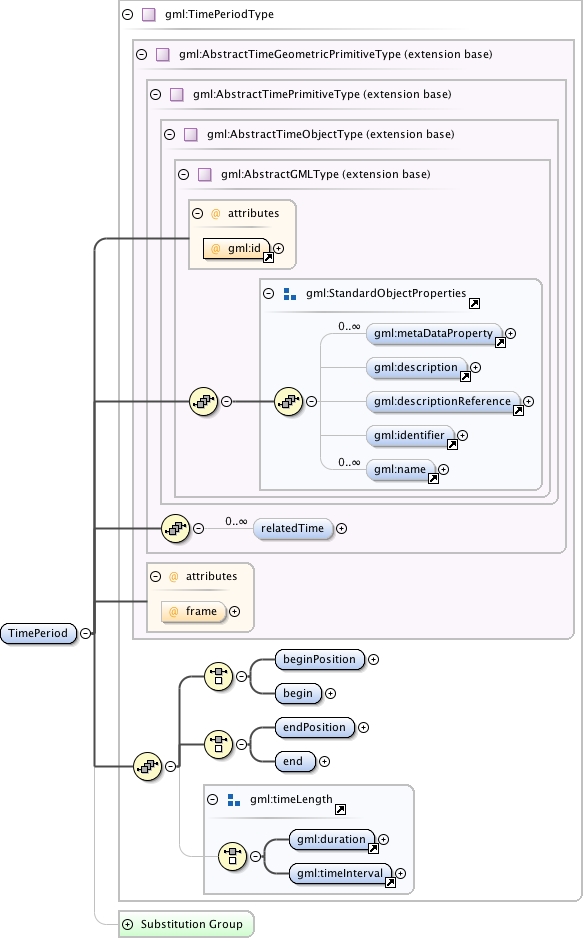| Namespace | http://www.opengis.net/gml/3.2 | |||||||||||||||||||
|
Annotations
|
|
|||||||||||||||||||
|
Diagram
|
 |
|||||||||||||||||||
| Type | gml:TimePeriodType | |||||||||||||||||||
| Type hierarchy | ||||||||||||||||||||
|
Properties
|
|
|||||||||||||||||||
|
Used by
|
|
|||||||||||||||||||
| Model | gml:metaDataProperty* , gml:description{0,1} , gml:descriptionReference{0,1} , gml:identifier{0,1} , gml:name* , gml:relatedTime* , (gml:beginPosition | gml:begin) , (gml:endPosition | gml:end) , (gml:duration | gml:timeInterval) | |||||||||||||||||||
| Children | gml:begin, gml:beginPosition, gml:description, gml:descriptionReference, gml:duration, gml:end, gml:endPosition, gml:identifier, gml:metaDataProperty, gml:name, gml:relatedTime, gml:timeInterval | |||||||||||||||||||
|
Instance
|
|
|||||||||||||||||||
|
Attributes
|
|
|||||||||||||||||||
|
Source
|
|
|||||||||||||||||||
| Schema location | http://schemas.opengis.net/gml/3.2.1/temporal.xsd |